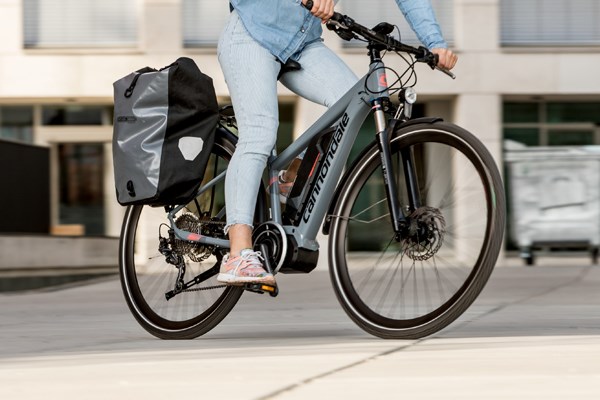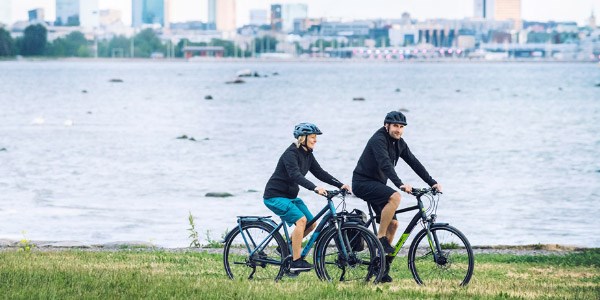Tyres make up a huge part of how a bike rides and are as important on a hybrid bike as they are on a road or mountain bike. When deciding which tyre is right for your hybrid bike it is important that you get one that’s the right size. You will also want to choose tyres that have the right tyre tread and levels of puncture protection for the kind of riding that you do.
Tyre Size
The size of a bike tyre can be shown in two different ways; traditional or ETRTO. Both use two numbers to show the wheel size that the tyre will fit and the width of the tyre. Traditional tyre sizing uses the wheel size followed by the tyre width while ETRTO uses tyre width followed by the wheel size. This can be confusing because these two systems measure the wheel rim differently.
Example: 700 x 28c is the same size as 28-622

Traditional and ETRTO tyre size table
We recommend that you use the traditional method wherever possible as most of the tyres that we stock use this system. If your existing tyre only shows the ETRTO tyre size then you can use the table below to convert it to the traditional tyre size system.
|
ETRTO Number |
Traditional Number |
|
700c wheels |
|
|
18-622 |
700 x 18C |
|
23-622 |
700 x 23C |
|
25-622 |
700 x 25C |
|
28-622 |
700 x 28C |
|
32-622 |
700 x 32C |
|
37-622 |
700 x 35C |
|
47-622 |
700 x 47C |
|
26" wheels |
|
|
50-559 |
26 x 1.9 |
|
54-559 |
26 x 2.1 |
|
55-559 |
26 x 2.2 |
|
58-559 |
26 x 2.35 |
|
27.5" / 650b wheels |
|
|
50-584 |
27.5 x 1.95 |
|
54-584 |
27.5 x 2.1 |
|
57-584 |
27.5 x 2.25 |
|
29" wheels |
|
|
50-622 |
29 x 2.0 |
|
54-622 |
29 x 2.1 |
|
55-622 |
29 x 2.2 |
Tread
Tyre tread refers to the pattern on the top of the tyre. This affects the performance in terms of steering precision, grip on different surfaces. Tyres with a relatively smooth tread pattern will be fast rolling on smooth roads and cycle paths but won’t give you much grip off-road. If you want to ride gravel tracks as well as roads, then look for a tyre with a blocky tread pattern. These won’t be as fast as tyres with smooth tread but will allow you to ride on a greater variety of terrain.

Compound
The rubber compound of the tyre makes up the characteristics of the tyre: how it rides, feels and performs. Softer compounds offer more grip but will wear quicker. Harder compounds last a little longer but don’t provide the same level of grip. More expensive tyres tend to have a softer rubber compound for greater performance. Tyres with dual or triple compounds have harder rubber in the centre for durability with softer rubber on the edges for improved cornering grip. Some, like Continental’s Black Chili compound, include additives which help balance both rolling resistance and grip.

Puncture Protection
Puncture protection is built into many hybrid tyres and is a great way to avoid getting a flat. Many tyres have a layer beneath the tread that helps prevent punctures. There is a wide range to choose from with more expensive options either having a greater amount of protection or protection that weighs less. As with many cycling components, there’s a balance between levels of puncture protection and weight.

Visibility
Many hybrid bike tyres have reflective sidewalls. This white strip around the edge of the tyre is made from reflective materials that make the wheel look like a glowing hoop when lit from the side at night. Reflective sidewalls are a great way to improve your side on visibility when cycling after dark.

Winter Tyres
As well as making the roads more slippery wet weather throws up more debris. This means that the best winter hybrid bike tyres offer improved puncture protection and better grip without slowing you down too much. Tyres like the Specialized Armadillo are very tough and remarkably grippy while still rolling quickly. As you’re more likely to be riding on rough cycle paths wider tyres with a treaded pattern are a good option for winter.






